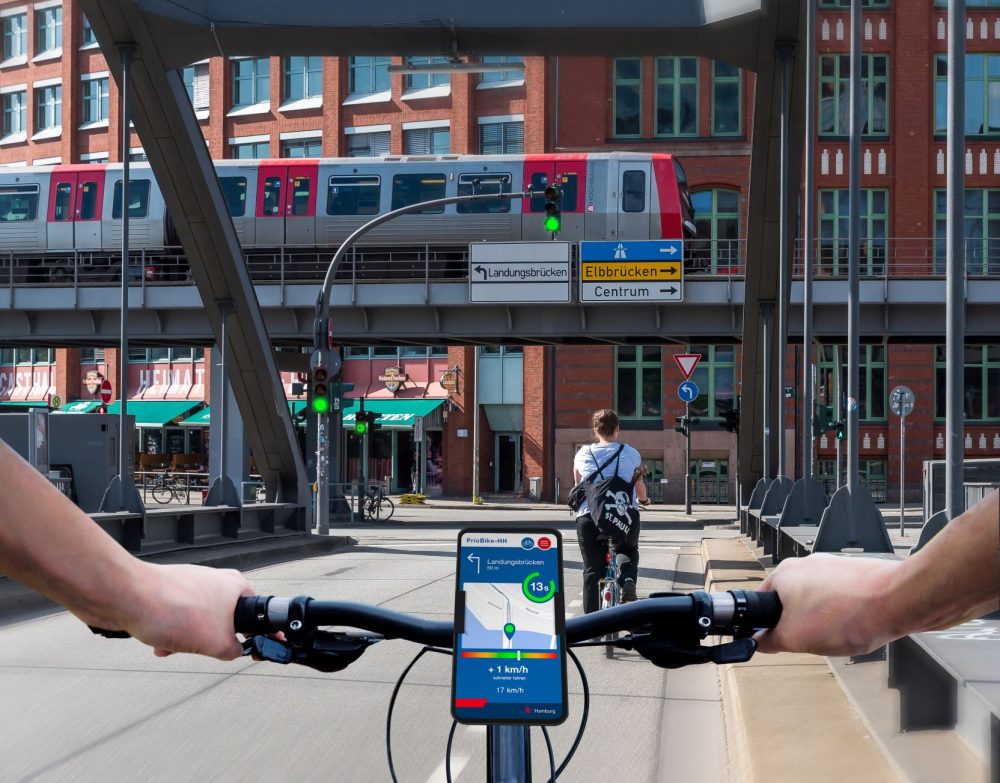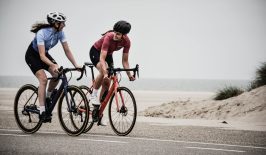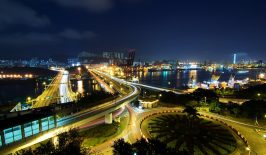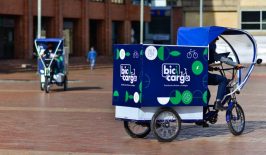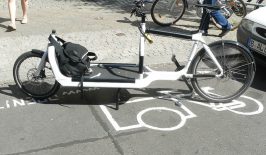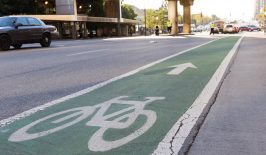Anyone who cycles frequently in the city knows the situation well: red lights after red lights. This stop-and-go routine for cyclists is mainly due to the fact that the entire urban infrastructure is designed for car traffic – including the traffic lights.
But there are solutions to the problem. One of them is currently being developed in the PrioBike project, which is funded by the German Federal Ministry of Transport and Digitalisation of Municipal Transport Systems.

Graduate engineer Sven Fröhlich heads the PrioBike project at TU Dresden. He is a passionate cyclist himself and cycles practically every way in the city, no matter what the weather.
How did the project come about?
At the Faculty of Transport Sciences at the TU Dresden, we once developed green time forecasts for traffic lights in a project with a car manufacturer. While cycling, the desire arose to apply this forecast to cycling at the right speed and arriving at the traffic lights when the light turns green. The idea was born. We first started developing the BikeNow app in Dresden. A working prototype was just finished and we were about to enter the test phase when the responsible office in the city administration told us that we were no longer allowed to use the data needed for the app. By a happy coincidence, we just had contact with the LSBG (Landesbetrieb Straßen, Brücken und Gewässer) in Hamburg at that time. Hamburg is very progressive and transparent when it comes to providing open data, creating infrastructure for providing open data and innovation in transport. We were quickly convinced that we wanted to do a joint project.
Why is an app like PrioBike needed?
The app should make it easier for cyclists to get around in a traffic system that is optimised for cars. In a way, it creates a “pseudo green wave”: when cyclists adapt to the traffic light circuits for motorised individual traffic (MIV) with the help of the speed recommendations, they also have a kind of green wave within certain limits.
The aim of PrioBike-HH is to speed up cycling, reduce waiting times, provide intelligent information and increase safety in cycling. The app is only one component, albeit an important one.
How exactly does the app work?
The PrioBike app is designed to provide cyclists with information to help them reach their destination faster or more comfortably. The focus is on a speed recommendation that, if followed, will get you to the next traffic light when the light turns green. If you are a sporty cyclist, you can ride a little faster and still get the green light. If you cycle at a leisurely pace, you will arrive at the traffic lights when the red phase has just ended and the traffic lights turn green. Normally, however, a suitable green phase should be achieved with a moderate speed adjustment. A suggested maximum speed can also be set.
In addition, there is also planned to be a routing system that can offer ‘attractive’ or safe routes in addition to the shortest and fastest route, for example. However, there is still some need for research, as some of these criteria are very subjective and a data basis must first be created for this.
To do this, we have data in the backend that tells us how the traffic lights have switched. From this we generate forecasts of how the traffic lights will change, because when and how a traffic light switches is not always the same. Almost all traffic lights are traffic-dependent, i.e. they adapt to the traffic situation. So it can happen that one direction gets green for a little longer if there are a lot of vehicles coming from that direction. Public transport also has a great influence on the traffic lights. Buses and trains are often given priority at intersections, which sometimes makes the traffic light control very dynamic. Combining our green time predictions with the position, direction of travel and speed of cyclists recorded with their smartphones, we can calculate and display a speed recommendation.
When can I download the app?
We are currently in the testing and development phase. We have successfully completed our own initial tests in Hamburg. In summer 2022, we want to start a large user test, which will initially take place with a closed user group. This will make it easier to collect feedback and integrate the improvements into the app. From summer 2023, the app should then be available for free download.
Adjusting my speed to traffic light phases is just one way to support cyclists with digital tools. But there are more possibilities, aren’t there?
That’s right, the app makes it possible to make cycling more attractive without having to make changes to the infrastructure. It helps cyclists to better navigate the existing system. I see it as a first step on the way to improving urban cycling. Of course, it would be more effective to improve the infrastructure for cyclists. On the one hand, cycle paths offer a lot of potential, and various municipalities are continuously working on these. But traffic lights can also be better adapted to cyclists. Real green waves are usually designed for motorised traffic, which is usually of little use to cyclists because the speeds of motorised traffic and cyclists differ too much. But PrioBike also actively focuses on this point.
As part of the project, there will be routes with green waves that are adapted to the speed of cyclists. A ‘multimodal green wave’ will also be tested on one corridor. There, the mode of transport with the highest traffic share will dynamically receive the green wave, i.e. either the MIV or the cyclists.
But that requires a lot of data, doesn’t it?
Yes, but in recent years many tools have been created to collect and evaluate cycling data, which can make a valuable contribution to the evaluation and planning of cycling infrastructure. The PrioBike app will also collect DSGVO-compliant floating bike data that further supports this approach.
But despite all the digital tools to support cyclists, politics has the greatest influence on improving cycling and makes the major decisions. The traffic space itself and the resources (space, financial means) for its expansion and reconstruction are limited, and there is always a prioritisation here – so far often in favour of the MIV.
What are the biggest obstacles that PrioBike and other approaches face?
Especially in the area of transport, you often have to rely on good cooperation with the administration and authorities. If you don’t get support from the people who work in the relevant places, it can be difficult or impossible to try out new ideas or develop new approaches.
It is also sometimes difficult to get the necessary data. Sometimes authorities and administration do not even know what data they have. Often the data is scattered in different systems or locked away in data silos – or simply exists only in paper form.
What is the best way to overcome these hurdles?
It helps if the authorities/administration have motivated and technically skilled employees who are interested in progressing development and have the necessary time budget. In our cooperation with the city of Hamburg, we have had very good experiences.
What do you think urban mobility will look like in 20 years?
In the less optimistic imagination, mobility has only changed technically: Most vehicles are electrically powered, communicate with each other and with the infrastructure, and some of them may even already be driving autonomously. But that alone will not change the volume of traffic, the quality of life and the use of space in urban areas.
In the optimistic imagination, there have been developments in society and urban planning in addition to the technical advances. Then there might be areas where car traffic only plays a subordinate role. This could become possible if ideas and concepts such as those being thought of and partly already realised in Paris (“15-minute city”, Anne Hidalgo), Barcelona (Superilles) and Berlin (Kiezblocks) prove to be good and feasible. Most mobility needs can then be met in urban areas on foot, by bicycle or by public transport. If one does need a car, rental vehicles are easily available. All of this is supported by services that can be used in a very low-threshold manner and that have a simple and transparent tariff structure – all of which, of course, complies with data protection laws!
